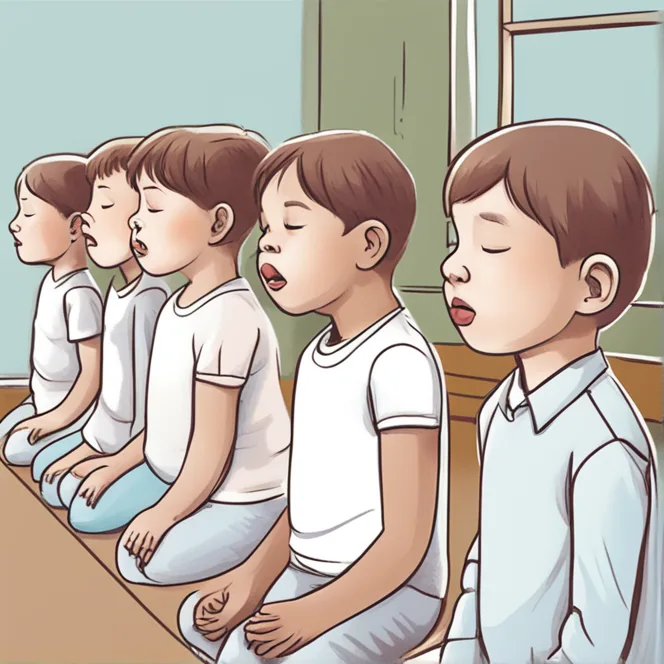
Mindful Moments For Young Minds
Discover how mindfulness meditation can benefit elementary students in this comprehensive guide.
article by Hina Kurosawa
The Rise of Mindfulness
In our fast-paced world, the art of mindfulness is gaining attention as a beneficial practice for individuals of all ages, including young students. As elementary-aged children navigate the formative years of their development, incorporating mindfulness meditation into their routine can reap multifaceted benefits. Mindfulness is not merely a trend; it is a timeless practice with roots that stretch back centuries, now finding its place in modern education systems.

Benefits for Young Learners
Mindfulness meditation offers a plethora of advantages to the cognitive, emotional, and social facets of a child's life. Research indicates improvements in attention span, emotional regulation, and empathy among young practitioners. These skills are essential for school performance, peer relationships, and overall well-being. Additionally, regular mindfulness practice can mitigate stress and anxiety, which are increasingly prevalent in today's youth.

Introducing Mindfulness in Schools
The integration of mindfulness in elementary curricula needs to be a careful, thoughtful process. It's important to start with simple exercises attuned to a child's level of understanding and attention. Short, engaging activities that focus on breathing, sensory experiences, and guided imagery successfully introduce the concepts of mindfulness to young students. Ensuring that the activities are age-appropriate and relatable is key to fostering their interest and participation.
Creating a Mindful Classroom
To cultivate a mindful classroom, educators can incorporate regular short sessions of meditation into the daily routine. These sessions serve as a calm transition between different parts of the school day. Incorporating visual aids, storytelling, and interactive components can help maintain student engagement. Over time, students may begin to use mindfulness techniques independently to manage their emotions and focus their attention.

Mindfulness Throughout the Day
Apart from dedicated meditation times, mindfulness can be woven into various aspects of the school day. It can be integrated into activities such as walking to lunch, listening to a story, or even while students are working on assignments. This seamless integration helps students recognize that mindfulness is not only a practice for quiet times but also a tool that can be used throughout their day.
Challenges and Considerations
While the benefits are clear, introducing mindfulness meditation into an elementary setting is not without challenges. It's important for educators to receive proper training to guide mindfulness practices effectively. Cultural sensitivities and individual student needs must also be taken into account. Ensuring parental understanding and support is crucial, as well, for a holistic approach to child development.
Looking to the Stars: Astrological Insights for 2024 and Beyond
As we encourage young minds to embrace mindfulness, it's interesting to add an astrological perspective tailored for 2024. As Saturn moves into Pisces, it heralds a time of heightened sensitivity and intuition, making it an especially auspicious period to adopt introspective practices like mindfulness meditation. This astrological climate supports depth of feeling and understanding, which can enhance the introspective experiences of children.
Published: 12/14/2023
Modified: 12/15/2023
More predictions
Come back here soon to learn more about yourself and your future


Mindfulness Meditation: Finding Balance
Discover the serene interplay of meditation and mindfulness for a harmonious balance, aligning with cosmic rhythms and personal growth.


Meditative Practices & Limbic System
Discover how meditation can influence the limbic system, enhancing emotional balance and well-being.


Meditative Healing Post-Divorce
Discover the soothing power of mindfulness meditation to heal and restore balance after divorce.